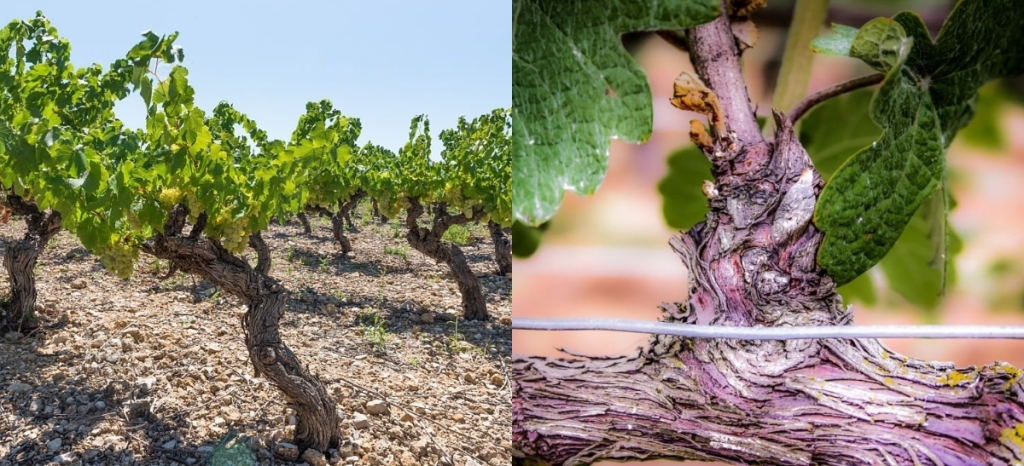
In the realm of excellent wine, a new organisation has emerged. From a distance, it resembles an exclusive members club with a roll call of some of the top figures in the wine industry. Les “Francs de Pied,” a producer organisation, brings together those who deal with ungrafted grapes. However, there is a catch: as of now, only Europeans are members because ungrafted vines must be native varietals to the country of origin. Additionally, its president is not without his own share of scandal.
Because of this, selecting a rootstock is a vinicultural tool. Because they will have various rootstocks, it is also envisaged that growers will notice a difference between their grafted and ungrafted plants, assuming they have either. It is unreasonable to believe that vinifera rootstocks will always be better.
Then phylloxera appeared, forcing nearly all vineyards to be replanted on resistant rootstocks. The variety of rootstocks that are available today are the product of several crossings amongst American vine species produced by a breeding programme at the time. More recently, additional crossings have given rise to new rootstocks like Fercal, but there has been a somewhat alarming lack of effort put into creating new species of rootstock. The rootstocks that were made accessible were chosen for their phylloxera resistance, grafting simplicity, and subsequently for characteristics like lime tolerance, drought resistance, and higher and lower vigour.
This all seems to be fairly interesting thus far. There is nothing wrong with top producers who still have some vines that haven’t been grafted getting together over dinner and exchanging tales. When claims are made that ungrafted vines are superior to grafted vines in some way or that something is lost when a vine is grafted, things get a bit tricky. The science presented here may not be reliable.
Of course, there is debate in the wine industry regarding the caliber of nursery work, and grafting in particular, but this is a very different topic. Instead of giving up on grafting, the solution to poor grafting is to improve it.
Despite the fact that fruit tree grafting is an old practise, vines were never grafted before the late 19th century. Simply put, there was no need to graft. Additionally, vineyards would have appeared very differently than they do now. If a new vine was required, it was sufficient to either bury a portion of a cane, keeping it linked to the mother vine, a procedure known as layering, or to plant a cutting into the ground. High planting densities were typical, and tractor-friendly tidy rows were not required. En foule (random planting of vines with roughly equal spacing) was fairly popular.
The strange thing about Les Francs de Pied’s conversations thus far is that non-European wine regions have been essentially shut out. Chile boasts many tens of thousands of hectares of ungrafted grapes and no phylloxera. Although it is not necessary to graft there, some people have done so because it enables them to use the rootstocks, a tool used in viticulture. They wouldn’t have gone through the trouble and expense of grafting if there was any significant benefit to own-rooted vines in terms of wine quality.
Even though phylloxera is a problem in Argentina, many vines are ungrafted. Washington State is the same. Phylloxera does not exist in South Australia, and the majority of its vineyards are ungrafted as well. In order to gain recognition for ungrafted vineyards, Les Francs de Pied is preparing a special label for ungrafted grapes and intends to make a submission to UNESCO. However, it is obvious that they do not plan on bringing this label and notoriety to Chile, Australia, or Argentina, where numerous wines from ungrafted vineyards can be had for under €20. This protectionism irritates me a little because it doesn’t matter whether the planted variety is indigenous to that nation or not if the idea behind it is that cultivating ungrafted vines creates better wine.
In essence, it is telling the developing world that they cannot participate in this.It seems a little foolish to encourage individuals to plant ungrafted vineyard plots. In the 1970s, ungrafted grapes were first planted in the Marlborough region of New Zealand; however, by the 1990s, all of these vineyards needed to be replanted. Older vineyards in Central Otago, New Zealand, as well as certain ungrafted vineyards in Oregon’s Willamette Valley, are all dying off slowly. Meanwhile, nearly all of the world’s most renowned fine wines are produced on excellently performing grafted vines. Although it’s admirable that growers desire to preserve very ancient, ungrafted vineyards and that they have a club, let’s put science at the forefront of this discussion.